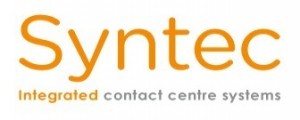Five ways to reduce queuing time in your contact centre – Danny Cresswell of Syntec gives tips and advice on how to solve this problem in your contact centre.

High call abandon rates are never good but they’re particularly problematic if your business is running any kind of inbound marketing campaign when every call abandoned can mean lost business.
Even if your callers have no choice but to deal with you, the longer they have to wait the less positive they’re likely to feel about you, and it’s not great for your contact centre operators to have to spend their time dealing with irritated and annoyed customers. So, it’s in everyone’s interest to reduce queue waiting time.
It’s not uncommon for call centres to try and achieve this by incentivising operators to reduce the time they spend on each call to a minimum, but while this might have the desired effect of reducing queuing times, it can also have the unintended side effect of an equivalent reduction in callers’ perceptions of service quality if they feel rushed through their call. So, what can be done to reduce queuing times without risking a reduction in customer service? Here are some ideas.
Channel shift wherever possible
It’s worth thinking through your processes and seeing whether there are regular routine enquiries that could be shifted to another channel. If people are regularly calling to ask the same questions, can these questions be answered on your website? Talk to your call centre operators to better understand the types of enquires that they’re mainly getting.
Consider whether social media or other cheaper channels such as web chats can be used to address high volume, low complexity transactions. The critical thing here is that you still allow your customers to choose their channel of choice. There will always be some people who prefer to call you, but perhaps others would be perfectly happy finding what they need on your website or dealing with you through other less resource intensive channels, freeing up your call centre operators to deal with more complex cases.
Enable your customers to serve themselves
This might be an extension of your channel shift strategy, moving transactions off the telephone and onto your website, but there’s also a lot you can do with a well set up automated telephone service, for example when it comes to taking payments, checking account details and other routine transactions. Again, the key here to to give customers the choice rather than forcing them onto your own channel of choice.
Make use of virtual queuing techniques such as automated call backs
You can cut the pain of queuing by using automated call back functionality, holding your customers in a virtual queue and calling them back when they reach the front. This saves your customers the frustration of having to spend prolonged periods of time on hold.
Configure alternative call routing in your queue
Configure your contact centre management system to dynamically route calls based on call volume. When call volumes (or queue length or waiting time) exceeds a certain time you can bring in reinforcements by routing calls to groups of agents who would normally be dealing with other things.
Address any internal inefficiencies
Whilst incentivising agents to reduce call times can be problematic, that doesn’t mean that you can’t cut queues by making some changes to your internal processes. Use the tracking and monitoring functions of your systems to better understand the patterns of calls, so you can make sure you’re staffed and ready for predicted peaks in traffic. Invest in quality training so that operators can maximise the efficiency of each call without reducing the customers’ service experience.
Think about how idle time in between calls could be reduced or how wrap up and admin time could be more efficiently handled, so that agents can spend more of their time dealing with callers rather than dealing with the associated administrative tasks. Make sure that callers are put through to an agent who has the necessary training and authorisation to deal with their enquiry, so that you reduce the inefficiency caused by calls having to be passed around internally. Your IVR system should enable you to filter calls to the right person or department to be able to facilitate this.

For additional information on Syntec visit their Website or view their Company Profile




